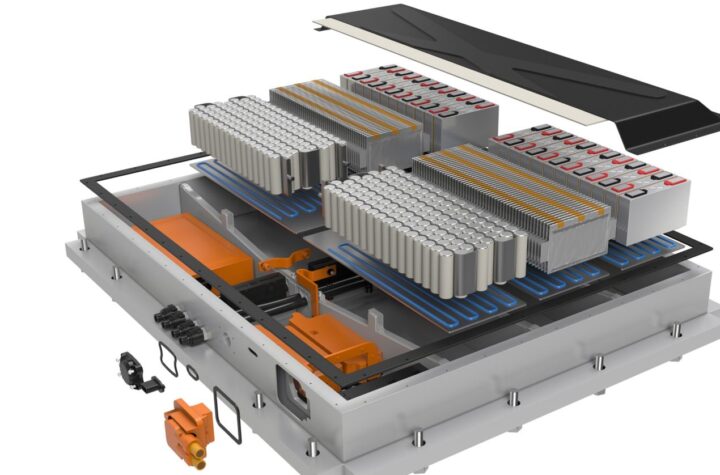
Record BMW sales in the United States and other markets are being driven by a combination of winning products built through what the company believes is a “win-win” partnership with its suppliers.
Automotive Industries (AI) asked Dr Klaus Draeger, Member of the Board of Management of BMW AG, Purchasing and Supplier Network what business model BMW follows in its purchasing strategy.
Draeger: In the past purchasing was seen as “what is the price and what can I get for the cheapest price”. That time is in the past. For us it has to be the balance between cost, quality, flexibility and innovation. Our situation is probably different than other companies in that we can directly compare in-house components with suppliers from outside. For example, we tell our suppliers that downtime for a tool change is 15 minutes. When they say it can’t be done, we invite them in and show them: Here is a big 4,000 ton machine and the change time is only 15 minutes. We also focus on the cost of components. We can calculate prices to a single digit due to the fact that we have in-house production. This has two effects: If the supplier is too high in his price in comparison to our calculations we discuss why he is so high and try to show him where there should be potential to reduce costs in his production process. But we also see the opposite. A price that is far below our cost calculation makes me very nervous for two reasons: The first might be that the supplier didn’t understand the complexity of the product, and will not be able to meet our standards. A cheap price could be buying later problems.
The other reason for the low price could be that the supplier is just thinking about filling his order books in order to sell part of his business. This usually also brings problems because when the new owner when re-calculating the prices it is going to see that he is not making money out of this component. When it comes to engineering we ask whether we can we afford all the technology in the component. If we have best practice calculation that it says that the component should be €50 but we can only spent €30 we have obviously technology at this point in time which is too expensive. We have to find different technology which we can buy for €30, which means that we have to work together with the engineering to find the right solution. Purchasing has to talk to our suppliers to see what cost-saving ideas they can share.
The next point is quality. We have millions of parts coming each day into the BMW production assembly lines so we need zero defect. We’ve made progress but we are still not where we would like to be. Another important factor is flexibility. In mid-2012 we found that European sales were down, but that US and Asia were faring much better in comparison with our projections and planning. We had to shift cars that were planned for Europe to US and Asia. But, buyers in Europe prefer mainly diesel cars with manual shift gears and in the US they want automatic transmission and gasoline engines.
The same applies for China and Asia. This meant we had to work with our suppliers to make big changes to our production program. We needed fewer diesel components and manual gearboxes, and many more gasoline engines and automatic transmissions. This problem even found its way into the interiors. Where the Germans like aluminum, the Americans like classic wood; Europeans like dark colors and in the US you need white. Up to 80% of the added value came from our suppliers. Our suppliers are very innovative, we want to motivate our suppliers to share their innovations with BMW and not with our competitors.
AI: How do you optimize your processes for efficiency and value creation?
Draeger: Purchasing and engineering work closely together. For engines we’ve set up a common front wheel drive architecture which gives us the ability to create cars with a lot of shared components. For example, with the MINI and the Compact Tourer, the whole body-in-white under structure, the complete electrical architecture and the engine compartment is basically the same. This is the basis for competitive prices through economies of scale. It also gives us more reliability and stability in planning.
AI: How do you help suppliers cut costs without affecting productivity and quality?
Draeger: I need healthy suppliers. I don’t need loss-making suppliers. One way to help them is with our best practice calculation. We discuss with the supplier what we think should make his process cost effective, and of course if the supplier is highly innovative we are prepared to think about his contribution margin. If somebody is just delivering simple built to print product he gets a margin that is for built to print products. If somebody is adding his own R&D we are prepared to discuss that as well.
AI: Where do you need more support from suppliers?
Draeger: When it comes to quality I would wish to have more support from the suppliers. Suppliers have to make sure their processes are really stable number 1, and number 2 – that they do not disturb the processes by, for example, changing a production location without informing us. The best thing is to have a problem in the beginning and the worst thing is to have a problem with a customer. So there I clearly need more support from our suppliers.
AI: At what stage do you bring suppliers in?
Draeger: That depends very much on what the component is. Some suppliers we bring from the very beginning even before we define the product in detail.
AI: What are the principles determining the rating of a supplier?
Draeger: It’s basically around four things: cost, quality, flexibility and innovation.
AI: What is the role of low cost country sourcing?
Draeger: Labor-intensive components have to go to low cost countries. But, you cannot optimize the product on only one issue such as labor. You have to look at the whole supply chain. This means that you can probably get a product from Eastern Europe pretty cheap, but the transport costs make it expensive.
AI: How does your modular strategy help you meet your targets?
Draeger: We very much rely on our architecture. In the future we ‘ll probably built one rear drive architecture, one front wheel drive architecture, and one for specific cars.
AI: How does BMW help suppliers in the current financial climate?
Draeger: We have different instruments. I think the most important message is that we are always open with the suppliers. Good business has to be a win-win solution for both parties.










More Stories
The Advantages of Cloud-Based Fax Software for Businesses
40 YEARS OF SILICONE GROWTH IN AMERICA
DuPont materials science advances next generation of EV batteries at The Battery Show